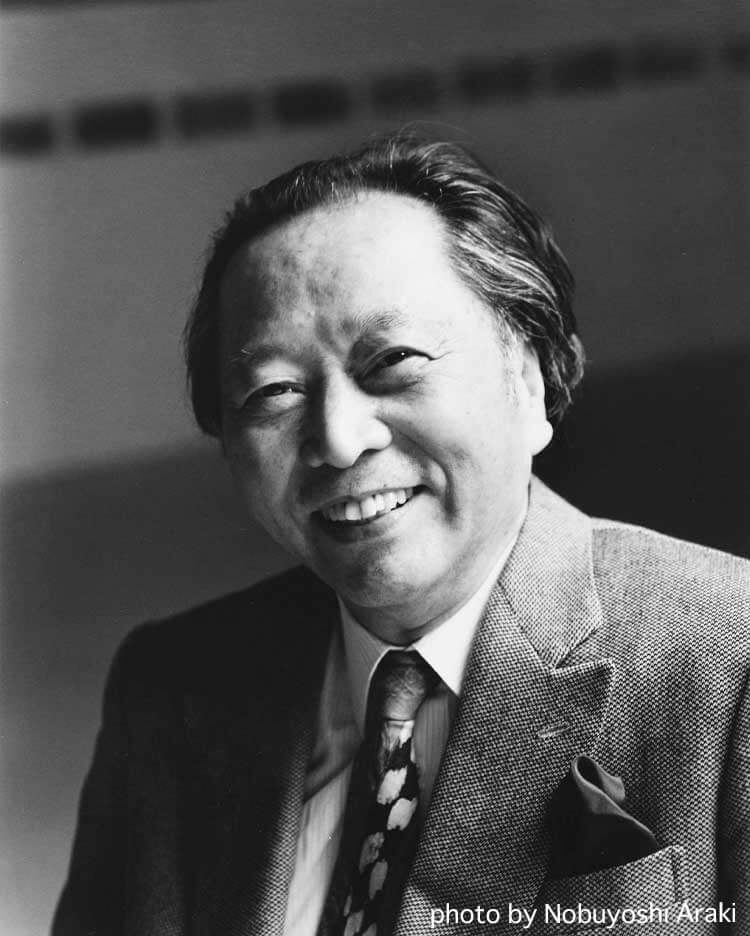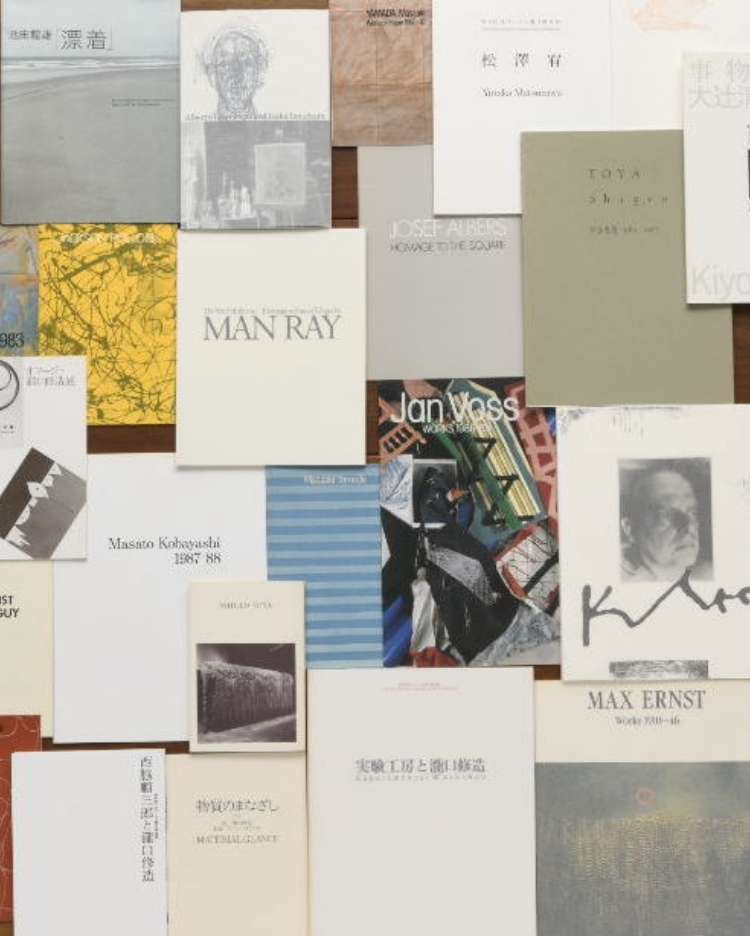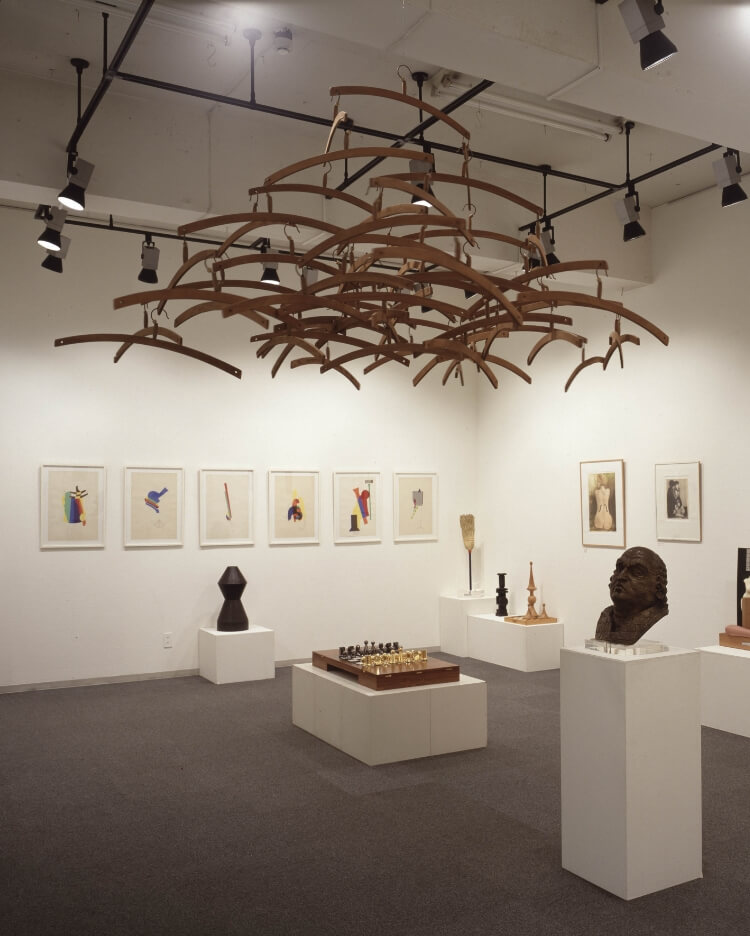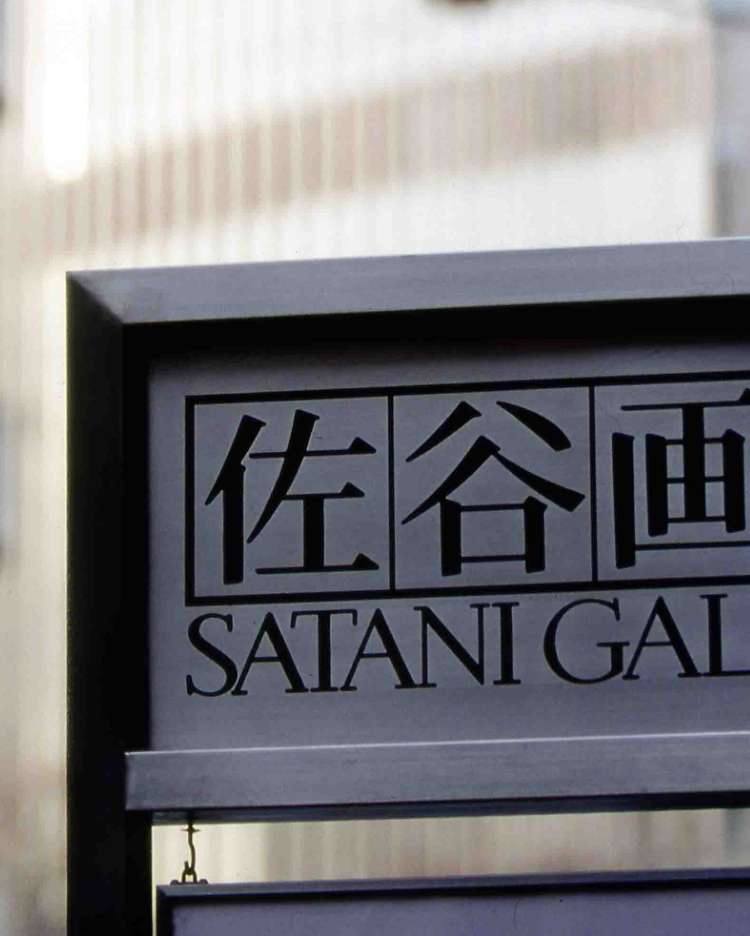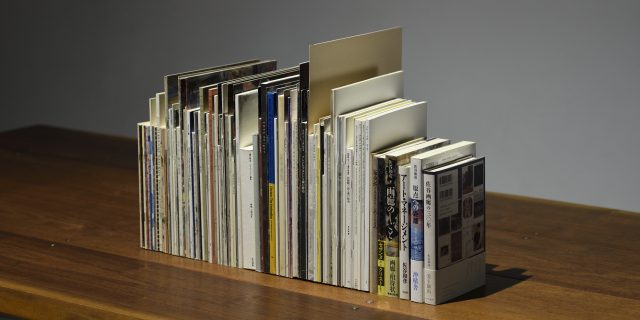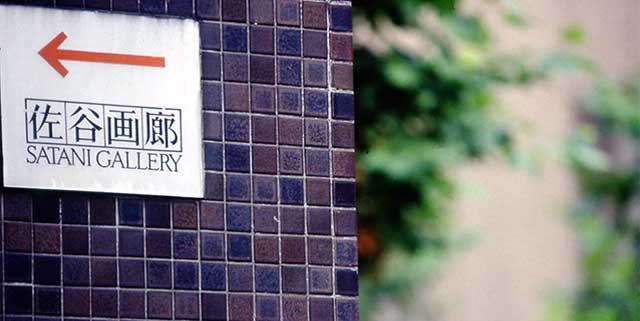The History of Satani Gallery
and the Work of Kazuhiko Satani: 1978-2007
※This website is best viewed on a computer.
Kazuhiko Satani (1928–2008) opened Satani Gallery in the Kyobashi district of Tokyo in 1978. The gallery moved to Ginza in 1982 before moving to Satani’s house in Ogikubo in 2000. Remaining open until 2007, Satani Gallery stands alongside Tokyo Gallery and Minami Gallery as second-generation galleries that specialize in Japanese contemporary art of the postwar era.
Kazuhiko Satani oversaw a total of 164 exhibitions, including ongoing projects such as a number of Homages to Shuzo Takiguchi, and shows by Masaaki Yamada and Christo. He also published a total of 132 catalogues, based on his strong convictions, and wrote seven books of his own writings, such as Garo no Shigoto (The Work of a Gallery) (Bijutsu Shuppansha, 1988), Art Management (Heibonsha, 1996), and Satani Garo no Sanju-nen (30 Years of Satani Gallery) (Misuzu Shobo, 2007).
In addition, Satani presented countless Western masterpieces by artists such as Albers, Duchamp, Ernst, Klee, Man Ray, Picasso, Pollack and Rothko at exhibitions and supplied them to some of Japan’s major museums.
At the age of 45, Satani, a “salaryman collector,” accepted a managerial post at Minami Gallery, which at the time handled contemporary art. Five years later, he opened his own gallery, and remained highly active thereafter. This website is designed to shed light on every aspect of Satani’s activities in the Japanese contemporary art world and the ideas that his work was based on. To do this, we refer to Satani’s diary, which he kept every day without fail starting in the mid-’70s, when he began working at Minami Gallery, until the year before he died, and present information from his published writings. We would like to provide more helpful references and hints for researchers in the future.
There is nothing we would like more than to share Kazuhiko Satani’s burning passion for art and essay writing with you.
Kazuhiko Satani (1928-2008) opened Satani Gallery in the Kyobashi district of Tokyo in 1978. The gallery moved to Ginza in 1982 before moving to Satani’s house in Ogikubo in 2000. Remaining open until 2007, Satani Gallery stands alongside Tokyo Gallery and Minami Gallery as second-generation galleries that specialize in Japanese contemporary art of the postwar era.
Kazuhiko Satani oversaw a total of 164 exhibitions, including ongoing projects such as a number of Homages to Shuzo Takiguchi, and shows by Masaaki Yamada and Christo. He also published a total of 132 catalogues, based on his strong convictions, and wrote seven books of his own writings, such as Garo no Shigoto (The Work of a Gallery) (Bijutsu Shuppansha, 1988), Art Management (Heibonsha, 1996), and Satani Garo no Sanju-nen (30 Years of Satani Gallery) (Misuzu Shobo, 2007).
In addition, Satani presented countless Western masterpieces by artists such as Albers, Duchamp, Ernst, Klee, Man Ray, Picasso, Pollack and Rothko at exhibitions and supplied them to some of Japan’s major museums.
At the age of 45, Satani, a “salaryman collector,” accepted a managerial post at Minami Gallery, which at the time handled contemporary art. Five years later, he opened his own gallery, and remained highly active thereafter. This website is designed to shed light on every aspect of Satani’s activities in the Japanese contemporary art world and the ideas that his work was based on. To do this, we refer to Satani’s diary, which he kept every day without fail starting in the mid-’70s, when he began working at Minami Gallery, until the year before he died, and present information from his published writings. We would like to provide more helpful references and hints for researchers in the future.
There is nothing we would like more than to share Kazuhiko Satani’s burning passion for art and essay writing with you.
Shugo Satani
The Satani Gallery Archives

The History of Satani Gallery
and the Work of Kazuhiko Satani: 1978-2007
Foreword Kazuhiko Satani and Satani Gallery Homage to Shuzo Takiguchi Afterword / Colophon